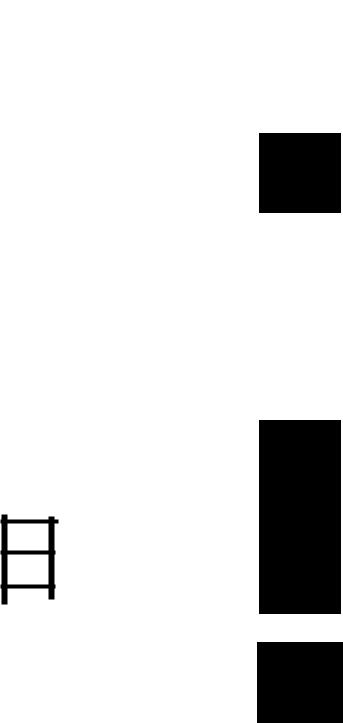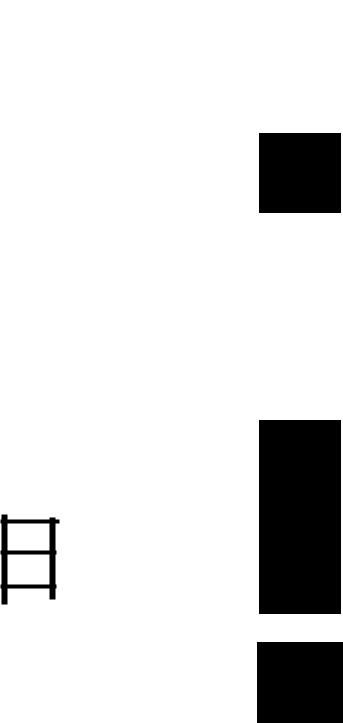
Kanji-Mnemonics---Robert-P.-Bodnaryk
.pdf
,,1/
-0-
/1"
Kanji Mnemonics
An Instruction Manual for Learning Japanese Characters
Robert P. Bodnaryk Ph.D.

,1/
-0-
/1"
Kanji Mnemonics
An Instruction Manual for Learning Japanese Characters
Robert P. Bodnaryk Ph.D.

Copyright © 2000 Robert P. Bodnaryk
ALL RIGHTS RESERVED
No part of this book may be copied, reproduced or transmitted in any manner whatsoever without written permission from the publisher. ISBN 0-9688937-0-8.
Forward comments and corrections to the publisher: Kanji Mnemonics, 149 Linacre Road, Winnipeg, Manitoba
R3T 3R5, CANADA or e-mail bodnaryk@mb.sympatico.ca
Copies of Kanji Mnemonics can be ordered from our Web site www.mts.netl-bodnaryk/index.htm
Acknowledgements
I am indebted to Or. Isao Morishima of Tottori University for careful editing. All the errors remaining in the text are my own. Special thanks to Or. Osamu Imura for many helpful suggestions and to Or. Toshiaki Hara, Yuko Tahira and students of Tottori University for trying their best to teach me how to speak Japanese.
Table of Contents
I. Introduction |
i-1 |
|
Kanji Came from China |
i-2 |
|
Kanji are Picture Words |
i-2 |
|
So Why Don'tI Get the Picture? |
i-2 |
|
How the Pictures Changed |
|
|
I:::J |
Drift |
i-3 |
I:::J |
Copying Error |
i-4 |
I:::J |
Assignment of New Meanings to Old Characters |
i-4 |
I:::J |
Standardization |
i-4 |
I:::J |
Simplification |
i-5 |
It'sa Picture of What!? |
i-5 |
|
The Structure of Kanji |
|
|
I:::J |
Radicals and Elements |
i-6 |
I:::J |
Kanji as Radicals |
i-6 |
I:::J On and kun Readings |
i-6 |
|
Mnemonicsthe Key to Learning Kanji |
|
|
I:::J |
Pictographs and Ideographs Tell the Story (Sometimes) |
i-7 |
I:::J |
Mnemonic Strings for Complex Kanji |
i-7 |
I:::J |
Natural Groupings of Kanji |
i-7 |
I:::J |
Kanji in Compound Words |
i-B |
I:::J |
Stroke Order |
i-B |
I:::J |
Kanji Cards |
i-B |
Other Tools for Learning Kanji |
|
|
I:::J |
Computers |
i-9 |
I:::J |
Dictionaries |
i-9 |
I:::J |
Other Kanji Texts |
i-9 |
General Rules for Writing Kanji |
|
|
I:::J |
First Steps |
i-10 |
I:::J |
Stroke Direction |
i-10 |
I:::J |
Stroke Order |
i-11 |
A Final Word... |
|
|
I:::J |
How Many Kanji Do You Really Need to Know? |
i-13 |
I:::J |
How Fast Can You Learn Them? |
i-13 |
11. Pictures and Symbols |
1 |
|
Ill. Sounds Groups |
|
|
I:::J |
Level 1 |
20 |
I:::J |
Level 2 |
39 |
I:::J |
Level 3 |
71 |
IV. Mixed Sound and Structure Groups |
|
|
I:::J |
Level 1 |
111 |
I:::J |
Level 2 |
142 |
I:::J |
Level 3 |
230 |
V. Structure Groups |
|
|
I:::J |
Level 1 |
277 |
I:::J |
Level 2 |
303 |
I:::J |
Level 3 |
346 |
VI. Appendix |
|
|
I:::J |
Abbreviations and Conventions |
393 |
I:::J |
Reference Material |
393 |
I:::J |
Kanji Dictionaries |
394 |
I:::J |
Index 1. ON Readings |
395 |
I:::J Index 2. Kun Readings |
410 |
I. INTRODUCTION
Kanji Mnemonics is an instruction manual for learning Japanese characters. It incorporates powerful mnemonic (memory-assisting) devices to help students learn all 1,945 kanji in everyday use in Japan. The manual assumes only a basic knowledge of Japanese grammar and the kana and is suitable for self-study or use in a classroom setting.
Kanji Mnemonics employs many interactive strategies to facilitate learning kanji. The manual is cumulative in its approach: simple kanji, radicals and elements are learned first and form the basis for the more complex characters that come later. Kanji are organized into natural groups based on mnemonically effective affinities. Structural elements that form each complex kanji are listed and cross-indexed. Finally, kanji are assigned 'mnemonicstrings'to make their meanings highly memorable for beginners and advanced students alike.
Although Kanji Mnemonics takes a modern, pragmatic approach to learning kanji, it also encourages a sympathetic appreciation of the etymology of these enduring characters and their great antiquity. A brief account of the kanji as pictographs or ideographs and their historic evolution are therefore given in Section I.
Section II presents 98 basic kanji, many of which are derived from simple pictures and symbols. In Section Ill, kanji are presented in groups that have a common structure and the same ON reading (Sound Groups). Section IV contains groups of kanji that have common structures but whose ON readings are not all the same (Mixed Sound and Structure Groups). Section V contains groups of kanji that have common structures but different ON readings (Structure Groups).
Within each of the Sound, Mixed and Structure groups, kanji are presented in graded levels of difficulty, which is usually (but not always) a function of the number of strokes required to write them. Although the assignment of kanji to levels of difficulty tends to be somewhat arbitrary, there seems little doubt that a Level 1 kanji such as ~ is a lot easier to learn than a Level 3 kanji such as ~f1. As the simple kanji are mastered, it becomes easier and easier to cope with the difficult ones.
Kanji Came from China
Historically the Japanese people had no written language of their own. Starting in about the fourth century AD and peaking in the sixth, they began borrowing the Chinese system of writing. Since Chinese and Japanese are entirely different spoken languages, the use of Chinese characters (in Japan called kanji, literally characters from Han China) to write Japanese was an unmitigated disaster. At first the sound of the borrowed characters was used to spell out Japanese words, and the Chinese meaning was ignored. This was an inefficient and awkward way of doing things. For example, the character for the sound KI ~ is highly complex and requires 12 strokes to write (it takes just four strokes with the Roman alphabet). Later, Chinese characters were taken for their meaning only and given a Japanese pronunciation. As a result, nearly two-thirds of kanji today have both a Chinese and Japanese pronunciation (called a 'reading')The. Japanese also supplemented the Chinese system of writing with two alphabets (called hiragana and katakana) of their own, each having some 45 different letters. The end result was, in the words of one exasperated writer, an insanely complicated system of writing.
Kanji are Picture Words
Some three thousand years ago when people in China (priests, most likely) wanted to record something, they drew pictures. What is written down can be preserved and transmitted to others and pictures are undeniably the best way of conveying some kinds of information. In our age of information overload, we use pictures with increasing frequency to convey messages effortlessly in the blink of an eye. The modern equivalent of kanji are everywhere these dayson the doors of every public washroom, on highway signs, in airports, on computer screens, on the products we buyinforming us, directing us or warning us in a way that mere words cannot match.
So Why Don'tI Get the Picture?
If picture words convey information in such a direct and meaningful way, why are the characters that form the backbone of the Chinese and Japanese systems of writing utterly incomprehensible to us when we first encounter them? Why are kanji so difficult? And why does it seem to take forever to learn kanji? A simple answer is that the situation was not always like this. Once, common pictographs (pictures of things) and ideographs (symbolic representations of intangibles, like love or war) were relatively straightforward. But, over thousands of years they have evolved, diverging from pictures that almost anyone could read, to become increasingly abstract symbols. Unfortunately,
:'"J
the highly-evolved modern forms now convey little of their meaning except to those who first spend many years studing them. For example, it is doubtful that anyone would guess the meaning of even the simplest of kanji, such as B . Yet there is not a man, woman or child who does not know what ~ stands for. This universal picture of the sun is a perfect kanji. Its modern equivalent B is really a nonsense symbol. It must be learned. The task of learning this kanji might seem trivial at first sight. After all, it does not take much mental horse power to remember that a rectangle with a horizontal dividing line stands for "sun". Multiply by two thousand (approximately the number of kanji you need to know to be newspaper-literate in Japan) and the magnitude of difficulty becomes more apparent.
How did so many kanji go from being wonderfully direct pictures to their largely unintelligible modern forms? More importantly, how is the student of Japanese to cope with learning a picture writing language that has all but abandoned its pictures? Knowledge of the historical evolution of characters can help to learn them.
How the Pictures Changed
Although Chinese characters have been around for three millennia, only a few of them can be traced back unchanged to their ancient origins. Most of them have evolved over time to their modern forms, a process that continues, at least in the Peoples Republic of China, to the present day. Standardized forms began to appear by the third century BC and by 200 AD the squared 'KAISHO'form widely used today in East Asia, including Japan, had become established.
The history of a kanji mayor may not help you to learn it. A long or convoluted or obscure etymology, while fascinating in its own right, may serve no useful mnemonic purpose. In Kanji Mnemonics, we cite the historical development of a kanji only when it serves as a direct memory aid. When we are etymologically silent, the reader can assume that no such purpose would be served.
Many kinds of evolutionary change have been identified by scholars. Some of the more common processes leading to change are as follows:
Drift A living language never stays the same. Change to its written form may occur as the result of intervention of governments bent on reform but in fact a lot of change is simply the result of drift. The historical development of many Chinese characters has been traced back in time by studying primitive characters first written on bone and tortoise shell, by studying characters on inscriptions, in court documents, poetry, letters and in various types of manuscripts and records that may span hundreds and sometimes thousands of years. For some characters, the etymological trail quickly
grows cold and their origins remain lost forever in the mists of time. Scholars may also disagree about the etymology of individual characters and it is not uncommon for there to be competing theories.
Copying Error Chinese characters were developed and written long before the invention of printing presses and Xerox machines. Today we take it for granted that multiple copies of a document will all be the same. In ancient times when another copy of a document was needed, it was copied by hand. Bad lighting, the failing eyesight of some copyists, fatigue and human error all took their toll on the fidelity of reproduction of handwritten manuscripts. An abrupt change in the historical development of a character is often the product of a copying error and its perpetuation by succeeding generations.
Copying errors have degraded the quality of characters, obscuring their meaning and making them more difficult to learn. Kanji that are the product of a copying error are noted in Kanji Mnemonics when it makes good didactic sense to do so.
Assignment of New Meanings to Old Characters From time to time, the prevailing linguistic authority has sanctioned a new meaning for an existing character. The new meaning is said to be 'borrowed',but in plain English the character was really a picture of something else. A character with a borrowed meaning is the ultimate nonsense symbol and a total capitulation of the picture writing concept. These "pictures" are not worth 1,000 wordsthey are not even worth one.
The student must bear up and just learn these rogues with the aid and advice of Kanji Mnemonics.
Standardization Early picture writing was not pretty to look at. Characters were of all different sizes and a general anarchy in writing them prevailed. In truth, the writing looked like the dog'sdinner. Such an unruly state of affairs is anathema to bureaucracy. A standardized system of writing on squared paper was introduced. All characters were to be written the same size, one to a square. This Procrustean bed of squares forced many changes to be made in the way the characters were written. Round shapes were squared to fit better (hence, the square sun referred to earlier). Since all characterswhether composed of two or twenty strokeshad to be written the same size, there was a reduction in the number of strokes for the more complex characters. Entire substructures vital to the integrity of the character as a picture were dropped or replaced by abbreviated versions. Lines that stuck out every which way in the old pictographs were made to run straight up and down, or straight across, or were otherwise tidied up. The characters took on a brisk new appearance but in the process gave up much of their essential quality as pictures. Ah! the bureaucratic mind! These squared characters, in place by 200 AD, conveyed their information more as symbols and less as pictures.
.It
